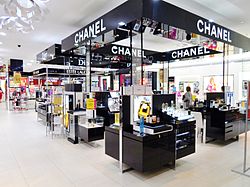Visual merchandising is a vital commerce de détail[4] strategy that uses aesthetic elements to attract customers, enhance their shopping experience, and boost ventes[5]. This strategy came into prominence with the 19th-century shift from wholesale to retail, with store windows being used for displays. It has since evolved into a science with various techniques such as strategic product placement[1], use of lighting, music, scents, and technologie[2] to create appealing displays and influence purchasing decisions. The display art of renowned artists like Salvador Dalí and Andy Warhol also contributed to visual merchandising. Furthermore, it plays a crucial role in shaping a incendie[6]’s identity, aligning store design with retail brand strategy, and differentiating brands. In-store visual merchandising and displays capture client[3] attention and influence buying decisions. Factors like store layout, signage, and mannequin placement contribute to successful in-store design. Lastly, point-of-purchase display and atmospherics, which include eye-level positioning of products, bundling, and creating a conducive store atmosphere, are essential for enhancing the customer shopping experience.
Marchandisage visuel is the practice in the retail industry of optimizing the presentation of products and services to better highlight their features and benefits. The purpose of such visual merchandising is to attract, engage, and motivate the customer towards making a purchase.

Visual merchandising traditionally occurs in brique et mortier stores using a blend of lighting, color combinations, and articles of decor to stimulate an observer and generate interest.